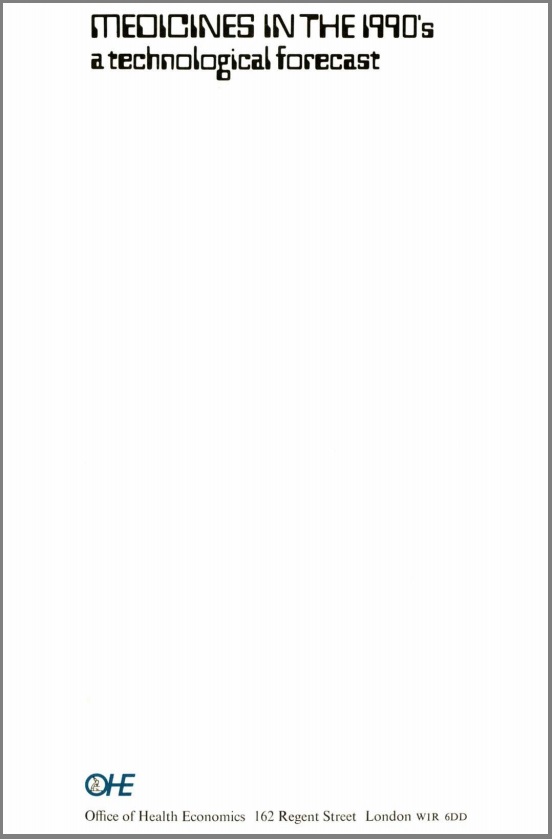Sign up to our newsletter Subscribe
An Analysis of NICE’s Optimised Decisions from 2015 to 2024

By 1990, the total cost of the National Health Service will probably have reached about £10,000 million of which about £1,300 million will be for medicines prescribed by general practitioners and hospital doctors. At 1968 prices the corresponding figures would be about £4,500…
By 1990, the total cost of the National Health Service will probably have reached about £10,000 million of which about £1,300 million will be for medicines prescribed by general practitioners and hospital doctors. At 1968 prices the corresponding figures would be about £4,500 million and £600 million. These calculations are based on the assumption that the Health Service (or its successor) will slowly continue to increase its share of the steadily rising national income .Its proportion rose from 4.04 per cent in 1958 to 5.12 per cent in 1967 and we predict that as society becomes more affluent it will continue upwards to 7.5 per cent in 1990. Pharmaceuticals are expected to maintain their steady share of total health service expenditure of about 13 percent.
This technological forecast predicts the progress which may be expected by that time. It also forecasts related changes in the pharmaceutical industry and in the practice of medicine. It is primarily a medical forecast and therefore drew mainly on medical expertise; perhaps on reflection it is regrettable that it did not draw more on other professions also.
The forecast was produced by a modification of what is called the ‘Delphi’ technique. The panel of experts listed in Appendix II volunteered to make forecasts on those of the subjects from the checklist in Appendix III on which they had special knowledge. The individual forecasts under each heading were then consolidated with the inclusion of conflicting forecasts when these arose. The resulting draft was sent out for comment to all the experts. In general this produced a rather satisfying result. Half a dozen or so of the original forecasts were each picked out as being technically invalid by a number of experts, and were, therefore, rejected. Many of the comments either clarified or developed the forecasts. The only difficulty arose in cases where entirely new forecasts or completely opposite opinions were offered by single individuals at this second stage; some – particularly the more off-beat suggestions – were left out because it was impracticable for them to be scrutinised by the other experts in yet a further round of consultation. Finally, the whole forecast was read by the OHE Editorial Board, and a number of points clarified in the light of their comments.
The resulting forecast is inevitably somewhat uneven. In places there is considerable detail while elsewhere it is in very general terms. Although most of the forecasts refer primarily to Britain, it was necessary in predicting, for example, the structure of the industry and its relationships with government to view the situation internationally. Some of the forecasts are dramatic, others mundane. But despite this a clear and interesting picture emerges on many aspects of the progress and problems which can be expected. If it does no more, this booklet will remind those who read it of the benefits to society which can be hoped for if scientific and technical resources can successfully be applied in the health field. Above all, it highlights some of the sociological problems which may arise as pharmacology moves in to new fields.
In making the forecast, contributors have, of course, made certain basic assumptions. First, that there will be continued national and international economic growth at roughly the same rates as over the past two decades. Second, that there will be reasonable political stability and that the basic social and economic structure of the Western world will not change fundamentally; however much the organisation of the National Health Service in Britain may change, health will continue to be regarded largely as a community responsibility. As is clear in the detailed discussion which follows, it has been assumed that the fruits of medical and pharmaceutical research will continue to be enjoyed internationally; thus the vast resources for health research in the United States will continue, as in the past, to supplement our own achievements in Europe. It has also been assumed that the necessary scientific manpower will be available internationally for the expanded research facilities both in the universities and in industry. Obviously all these assumptions depend on very much wider considerations than would fall within the scope of this forecast and no attempt is made to justify them.
Medicines in the 1990s: a Technological Forecast
